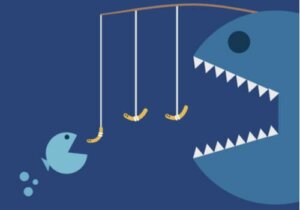How to Spot Consumer Deception

Commerce and advertising are parts of marketing, a field that frequently uses mechanisms to “motivate” people to buy products. They’re confusing and it’s only because they purposely omit valuable information in order to sell more. Thus, one can confidently say they’re designed for the purpose of consumer deception.
The law forbids deceptive advertising practices in most countries and the truth is many advertisers and merchants seldom violate the law. However, said practices aren’t always as transparent with the costumers as they should be.
There are many means of implementing consumer deception. In fact, some are so subtle they often go unnoticed. This is why every person must be aware of them and avoid being manipulated into making unnecessary onerous purchases.
“In a marketing class in college, we were assigned this case study to show us that ‘puffery’ is legal. This means that you can deceptively use words with double meanings to sell a product, even though they could mislead customers into thinking your words mean something different.”
-Suzy Kassem-

Consumer deception and omission of information
In one way or another, all consumer deception is about deliberately omitting information. However, this is a fundamental point in the advertising of a product in some cases. The funny thing is that they often use this strategy while providing a lot of information.
There’s a typical example of this form of deception in credit card promotions. These often invite customers to events for “winners-only holidays”. Once they have an unwary customer at a meeting, marketers give them all sorts of information about the benefits of winning such an award. Of course, they also tell them about the multiple destinations it covers and the hotels where they would stay, etc.
What they fail to say is one can only take such vacations in the most inappropriate times of the year to visit a certain place. Also, that you must take along a certain number of companions for the benefits to be effective.
Transfer of the incentive expenses to the consumer
This type of consumer deception takes place when the quantity or quality of a product or a service diminishes without prior or direct notice to those who benefit from it. In one way or another, the consumer ends up with something different from what they thought they bought.
An example of this is credit cards that offer important benefits to access them. For instance, they might offer incentives such as no charge for certain services and accumulation of points as long as you use the card. By doing so, the benefits are few in contrast to the obligations they generate.
Concealment of restrictions and conditions
This is one of the most used mechanisms to mislead consumers. It consists of offering important benefits in exchange for subscribing to a service or acquiring a product. The customer later realizes that the conditions are restrictive and outweigh the benefits.
An example of this is Internet or cable television services. They often offer six free months of service, but in order to access it you must sign a contract for two years or more, often at a high cost. Thus, they still recover the money they didn’t receive during the “free” months.

Deficiencies, imperfections, or use
This type of consumer deception is typical of sites dedicated exclusively to “bargains”. They offer products at prices that are rather attractive to consumers but fail to inform in a timely/clear manner that they’re either used or deficient.
These deficiencies become noticeable over time. For example, it happens with rebuilt, refurbished, or reconditioned electronic devices that look like new but aren’t. Or with garments that are poorly made and you only notice it after you put them on.
Anything free is consumer deception
Don’t be naïve; nothing is free when it comes to commerce. In fact, this would be absurd. This is because the logic of any private company is to obtain benefits. Thus, it doesn’t fit this principle. Just something to keep this in mind.
When someone gives you a “free sample”, for example, it’s clear they’re not asking you for anything in return, at least not directly. However, the cost of all these “free samples” is already a part of the cost of the product they’re promoting. In fact, you could purchase the same product at a lower cost if companies didn’t resort to this type of advertising.
People often overlook all these means of consumer deception. Shopping isn’t like it used to be. In the past, you bought what you needed and that was it. Now, it’s a fun delightful experience, or so marketers make you believe. For this reason, you must be careful not to become a victim of manipulation.
All cited sources were thoroughly reviewed by our team to ensure their quality, reliability, currency, and validity. The bibliography of this article was considered reliable and of academic or scientific accuracy.
Guillén, I. (2012). La protección de los consumidores contra el engaño y la falta de Información. El Foro, (12), 32-45.
This text is provided for informational purposes only and does not replace consultation with a professional. If in doubt, consult your specialist.








